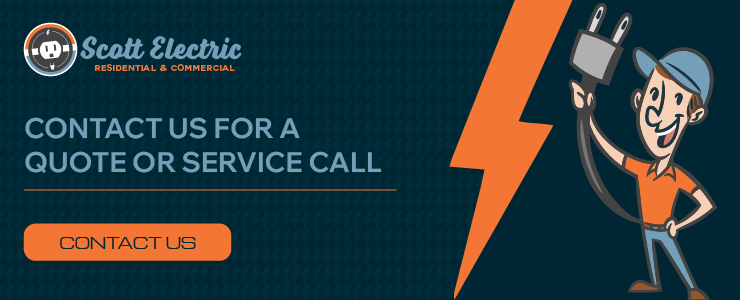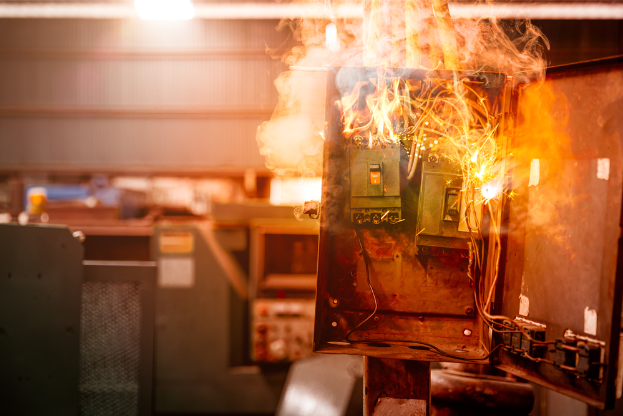Do you know how much your home’s electrical system can handle? If not, it’s time to understand circuit load and its importance in protecting your home from electrical overload.
In today’s modern world, our homes are filled with gadgets and appliances that make life more convenient. But with these conveniences comes a heavy draw on your home’s electrical circuits. Understanding how circuit load works will not only keep your home running smoothly but also safeguard it from potential hazards like electrical fires.
This blog post will guide you through the ins and outs of circuit load, presenting practical tips on how to protect your home from electrical overload. You’ll learn about the different types of circuit loads, the signs of overload, and what steps you can take to ensure your electrical system is up to the task.
What is Circuit Load?
Circuit load is basically how much electrical power a circuit can handle at once. Each circuit in your home is built to support a certain maximum load, which is measured in amperes (amps). When you plug in your appliances and devices, they pull power from these circuits.
Understanding your circuit load is crucial because exceeding the load can cause the circuit breaker to trip or, worse, lead to an electrical fire. Think of it like filling a bucket with water—once it’s full, any extra water just spills over and creates a mess.
So, always be mindful of how much you’re plugging in. If you’re using many devices at once, it might be a good idea to spread them out across different circuits.
Types of Circuit Loads
1. Continuous Load
This refers to any load that operates for three hours or more continuously. Common examples include refrigerators, air conditioners, and heating systems. It’s important to note that continuous loads should not exceed 80% of the circuit’s capacity to prevent overheating and ensure safe operation.
Additionally, proper sizing of circuits and breakers is crucial to handle these loads effectively, promoting energy efficiency and prolonging the lifespan of electrical appliances. Always consult with a qualified electrician to ensure compliance with local codes and standards.
2. Non-Continuous Load
These are loads that operate for shorter periods, often cycling on and off rather than running continuously. Examples include lights, computers, and smaller appliances like microwaves and toasters. Non-continuous loads can typically utilize up to 100% of the circuit’s capacity, allowing for greater flexibility in energy consumption without risking overload. Understanding the nature of these loads is crucial for effective circuit design and electrical safety.
Signs of Circuit Overload
Recognizing the signs of circuit overload can prevent potential disasters. Here are some common indicators:
- Tripping Circuit Breakers: If your circuit breakers frequently trip, it’s a clear sign that your circuit load is too high. The breaker is doing its job by cutting off the electricity to prevent overheating and potential fires.
- Dimming Lights: Lights that dim or flicker when you turn on other appliances indicate that the circuit is struggling to supply sufficient power to everything connected.
- Burning Smells: If you detect a burning smell coming from outlets or switches, it’s an urgent warning. This could mean that the wiring is overheating due to an overloaded circuit.

How to Protect Your Home from Electrical Overload
Now that you understand the basics, let’s explore some practical steps to protect your home from electrical overload. Taking proactive measures not only ensures your safety but also helps maintain the longevity of your appliances and electrical systems.
Understanding circuit load is key to avoiding tripped breakers and potential hazards. This article explains how load calculations work, why balance matters, and when it’s time to upgrade your system. Whether for everyday comfort or major renovations, your electrical infrastructure should always be thoughtfully supported.
1. Know Your Circuit Capacity
First and foremost, you need to know the capacity of your home’s circuits. Typically, a standard residential circuit is 15 or 20 amps. To find your circuit capacity, check your electrical panel, where it’s usually labeled.
2. Distribute Loads Wisely
Avoid plugging too many high-wattage appliances into a single circuit. Spread out the usage across multiple circuits to ensure no single circuit is overloaded.
3. Use Power Strips Wisely
Power strips can be handy, but they’re not a solution for circuit overload. They can increase the number of devices plugged into an outlet but do not increase the circuit’s capacity.
4. Upgrade Your Circuit Breaker Panel
If your home is older or you’ve added significant electrical loads, consider upgrading your circuit breaker panel. A modern panel can handle higher loads and is equipped with advanced safety features.
5. Schedule Regular Electrical Inspections
Regular inspections by a licensed electrician can help identify potential overload issues before they become dangerous. An electrician can check your circuits, outlets, and wiring to ensure everything functions safely and efficiently.
When to Call a Professional
If you notice persistent issues such as tripped breakers, warm outlets, or flickering lights, it’s time to call in the experts. At Scott Electric, our licensed electricians are trained to assess and address electrical issues safely. We can help you determine if your circuits are overloaded and provide solutions tailored to your home.
Additionally, if you are planning a major renovation or adding new appliances, consulting with our team is essential to ensure your electrical system can handle the increased load.
Protect Your Home—Contact Scott Electric Today for Expert Circuit Load Solutions!
Understanding and managing your circuit load is essential for the safety and efficiency of your home’s electrical system. By knowing your circuit capacity, distributing loads wisely, using power strips properly, upgrading your circuit breaker panel, and scheduling regular inspections, you can prevent electrical overload and keep your home safe.
Don’t wait for a crisis to strike. Take proactive steps today to protect your home. If you need further assistance, don’t hesitate to reach out to our licensed residential electricians in Columbia, MO. Your safety and peace of mind are worth it.

Now that you know how to Keep Your Home Safe and Bright by Understanding Circuit Load, read more to learn how small upgrades, like three-pronged plugs, can play a big role in preventing electrical fires.

